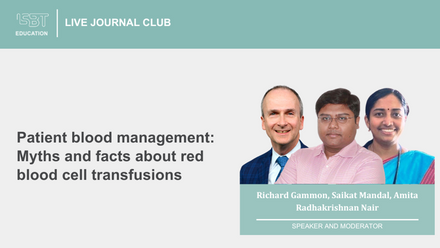Including the patient in patient blood management: Development and assessment of an educational animation tool
Sumedha Arya1, Tracy Xiang2, Grace H Tang3, Katerina Pavenski4,5,6
1Department of Medicine, Canadian Blood Services, Medical Affairs and Innovation, University of Toronto, Toronto, Ontario, Canada.2Biomedical Communications, Institute of Medical Sciences, University of Toronto, Toronto, Ontario, Canada.
3Hematology-Oncology Clinical Research Group, St. Michael's Hospital, University of Toronto, Toronto, Ontario, Canada.
4Department of Medicine and Laboratory Medicine, St. Michael's Hospital, Unity Health Toronto, Toronto, Ontario, Canada.
5Department of Medicine and Laboratory Medicine, University of Toronto, Toronto, Ontario, Canada.
6Department of Pathobiology, University of Toronto, Toronto, Ontario, Canada.
Abstract
Background: Patient blood management (PBM) programs are effective at reducing transfusion-associated mortality and morbidity; however, patient engagement within the realm of PBM remains relatively unstudied. Our objectives were to develop a novel educational tool utilizing animation to educate preoperative patients about anemia and to evaluate the effectiveness of this intervention.
Study design and methods: We created a patient-facing animation for preoperative surgical patients. The animation addressed characters' health journeys from diagnosis to treatment, addressing the role of PBM. We utilized the concept of patient activation as a means to empower patients, and developed the animation to be as accessible as possible. Post-viewing, patients provided feedback utilizing an electronic survey.
Results: A final version of the animation can be found here: https://vimeo.com/495857315. A total of 51 participants viewed our animation, the majority of whom were planned to undergo joint replacement or cardiac surgery. Almost all (94%, N = 4) agreed that taking an active role in their health was the most important factor in determining their ability to function. The video was felt to be easy to understand (96%, N = 49), and 92% (N = 47) agreed that they had a better understanding of anemia and its treatment. After watching the animation, patients felt more certain that they could follow through with their PBM plan (98%, N = 50).
Discussion: To the best of our knowledge, there are no other PBM-specific patient education animations. Patients enjoyed learning about PBM though animation, and patient education may lead to better uptake of PBM interventions. We hope that other hospitals will be inspired to pursue this approach.
Keywords: RBC transfusion; blood management; transfusion practices.



















